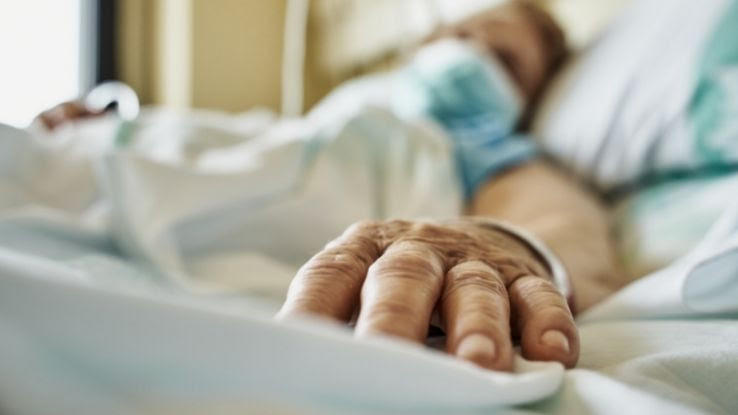An Unbiased View of Pacific Prime
An Unbiased View of Pacific Prime
Blog Article
The Only Guide to Pacific Prime
Table of ContentsAll About Pacific PrimeThe Facts About Pacific Prime UncoveredSome Known Questions About Pacific Prime.Pacific Prime Fundamentals ExplainedHow Pacific Prime can Save You Time, Stress, and Money.

This is due to the fact that the information were gathered for a duration of strong economic efficiency. Of the approximated 42 million people who were uninsured, all yet about 420,000 (regarding 1 percent) were under 65 years of age, the age at which most Americans become qualified for Medicare; 32 million were adults between ages 18 and 65, around 19 percent of all adults in this age; and 10 million were kids under 18 years old, regarding 13.9 percent of all kids (Mills, 2000).
These price quotes of the variety of persons without insurance are generated from the annual March Supplement to the Present Population Survey (CPS), carried out by the Demographics Bureau. Unless or else kept in mind, national estimates of people without medical insurance and proportions of the population with different type of protection are based upon the CPS, the most widely used source of quotes of insurance policy protection and uninsurance prices.
Fascination About Pacific Prime

Still, the CPS is especially useful due to the fact that it produces yearly quotes fairly rapidly, reporting the previous year's insurance policy protection approximates each September, and because it is the basis for a consistent collection of quotes for greater than 20 years, permitting for analysis of fads in insurance coverage gradually. For these reasons, along with the extensive usage of the CPS in other studies of insurance policy coverage that exist in this record, we rely on CPS price quotes, with restrictions noted.

The quote of the number of without insurance individuals increases when a populace's insurance policy status is tracked for several years. Over a three-year duration starting early in 1993, 72 million people, 29 percent of the united state populace, were without protection for at the very least one month. Within a solitary year (1994 ), 53 million individuals experienced at the very least a month without insurance coverage (Bennefield, 1998a)
6 out of every 10 uninsured grownups are themselves utilized. Although functioning does improve the chance that a person and one's relative will have insurance, it is not a guarantee. Also members of family members with two permanent breadwinner have virtually a one-in-ten opportunity of being without insurance (9.1 percent without insurance rate) (Hoffman and Pohl, 2000).
Pacific Prime for Dummies
New immigrants represent a considerable proportion of people without wellness insurance coverage. One evaluation has connected a considerable section of the recent development in the dimension of the united state uninsured population to immigrants who got here in the nation in between 1994 and 1998 (Camarota and Edwards, 2000). Current immigrants (those who involved the USA within the past 4 years) do have a high rate of being next without insurance (46 percent), yet they and their kids make up just 6 percent of those without insurance nationally (Holahan et al., 2001).
The partnership in between health and wellness insurance coverage and accessibility to care is well established, as documented later in this phase. The relationship between health insurance policy and wellness results is neither straight nor easy, a comprehensive clinical and wellness services research study literature web links health and wellness insurance policy protection to improved accessibility to care, much better quality, and boosted individual and population wellness condition.
Levels of evaluation for checking out the effects of uninsurance. This conversation of medical insurance coverage focuses mostly on the U.S. populace under age 65 because essentially all Americans 65 and older have Medicare or other public insurance coverage. Moreover, it focuses especially on those with no health and wellness insurance for any type of size of time.
Rumored Buzz on Pacific Prime
The problems faced by the underinsured are in some respects similar to those faced by the without insurance, although they are usually less extreme. expat insurance. Uninsurance and underinsurance, however, involve distinctly various plan concerns, and the methods for resolving them may vary. Throughout this research and the five reports to adhere to, the primary focus is on persons with no medical insurance and therefore no support in paying for health treatment beyond what is available via charity and safety and security web institutions
Medical insurance is a powerful factor influencing receipt of treatment since both patients and medical professionals react to the out-of-pocket cost of solutions - https://pubhtml5.com/homepage/pspip/. Health insurance, however, is neither necessary nor enough to get to medical services. Nonetheless, the independent and straight impact of health and wellness insurance protection on accessibility to wellness solutions is well established.
Others will get the healthcare they need also without health insurance, by spending for it out of pocket or seeking it from carriers who supply care cost-free or at highly subsidized prices. For still others, health insurance policy alone does not guarantee invoice of care due to various other nonfinancial barriers, such as a lack of healthcare suppliers in their area, limited accessibility to transport, illiteracy, or linguistic and cultural distinctions.
The smart Trick of Pacific Prime That Nobody is Talking About
Official study about uninsured populaces in the USA dates to the late 1920s and early 1930s when the Board on the Expense of Healthcare created a series of reports regarding financing medical professional office brows through and hospital stays. This concern came to be significant as the numbers of medically indigent climbed up throughout the Great Clinical depression.
Report this page